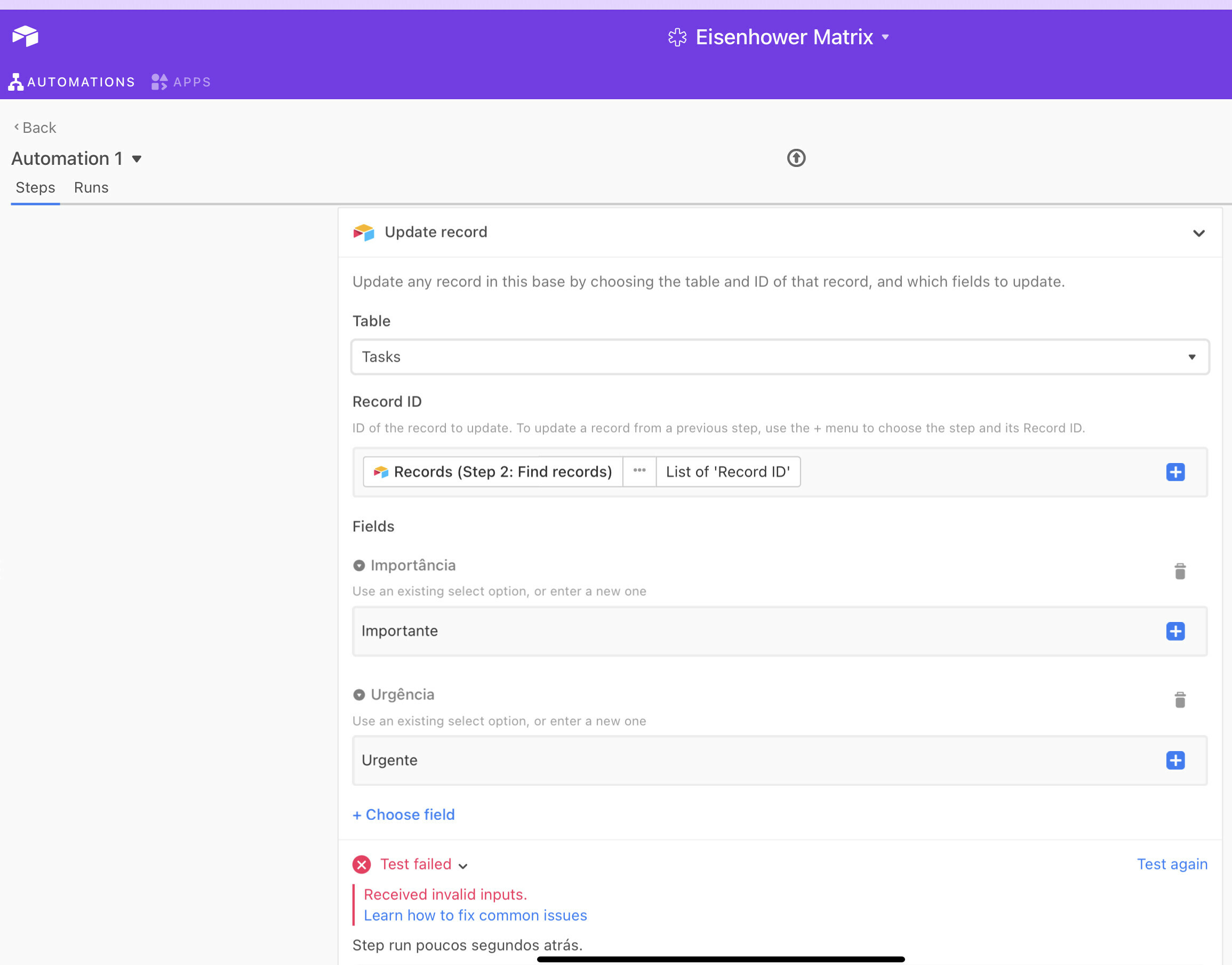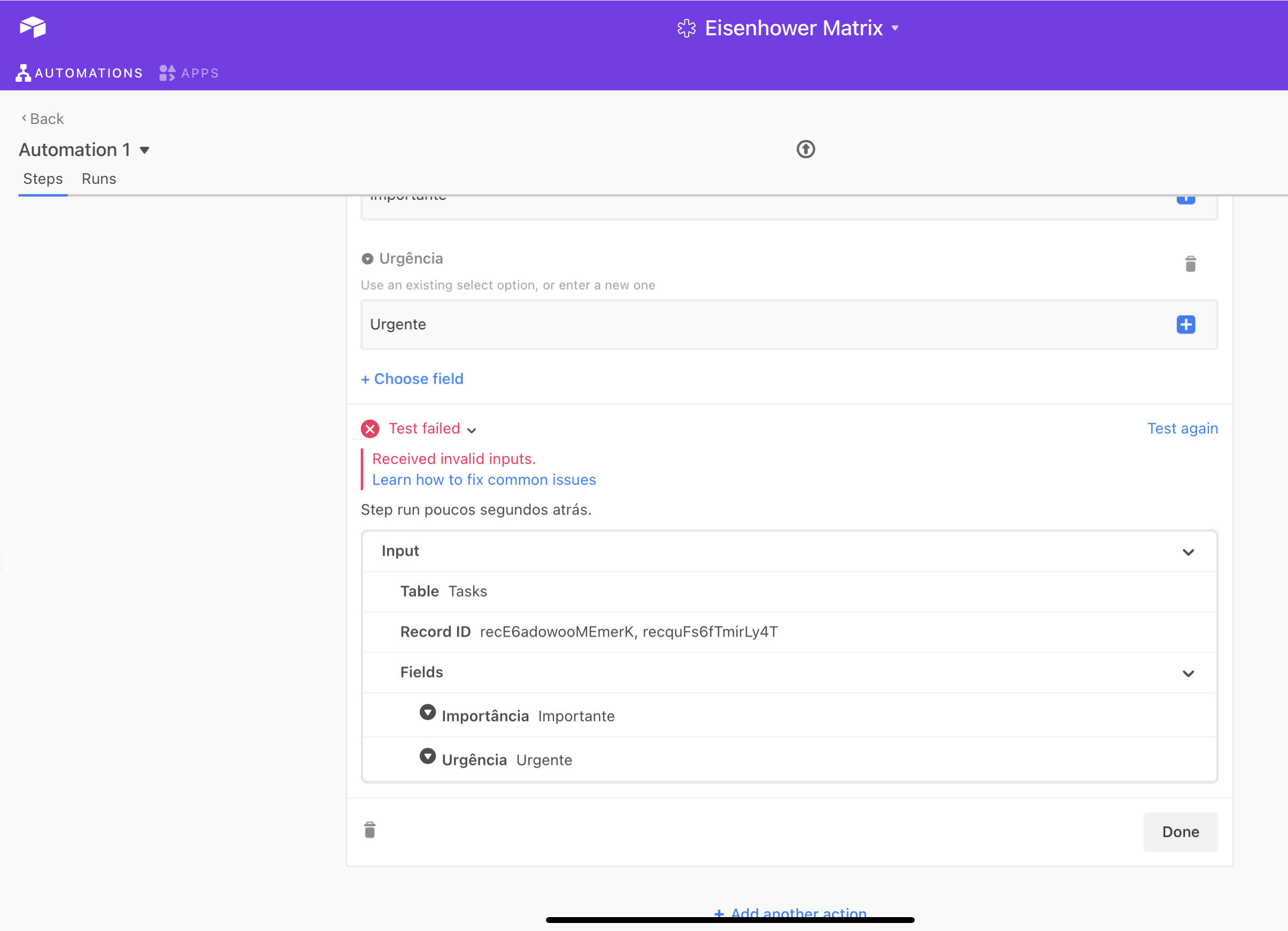Hi, guys! I’m trying to create an automation. Every time I enter a record matching specified conditions, I need an automation to update that same record, inserting values in two other fields.
I did the following steps:
Trigger: when a record enters a view
Action 1: find records where labels is ImportantUrgent
Action 2: update record from the Table Tasks, where RecordID is Records (Step 2: find records - List of Record Id, Field Importance is Important and Urgency is Urgent.
Yesterday, when I inserted only one record, that automation worked just fine.
Today, when I inserted another record, the automation failed.
See the screenshots below.
Could you please help me fix this?
[EDIT] I’ve tried several combinations. Keep receiving the same error message.







